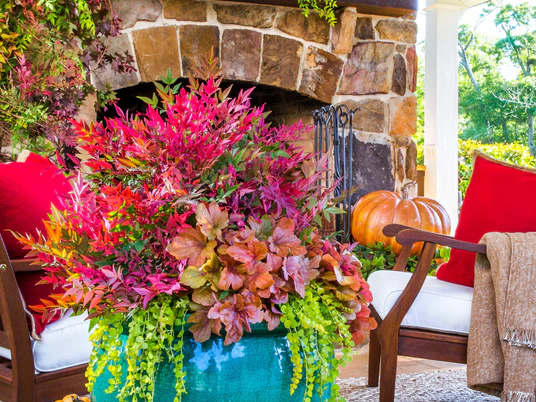Ebony Flame Crepe Myrtle
Ebony Flame Crepe Myrtle - 3 Gallon is backordered and will ship as soon as it is back in stock.
Description
Description
The Ebony Flame Crapemyrtle is a striking and versatile ornamental shrub that promises to set your landscape ablaze with dramatic beauty. This deciduous marvel is distinguished by its rich, deep maroon to ebony-hued foliage, providing a stunning backdrop to its vibrant crimson-red blossoms that burst forth in lavish clusters during the summer months.
The Ebony Flame Crapemyrtle boasts an upright and arching growth habit, reaching a mature height of 10 to 12 feet with a spread of 6 to 8 feet, making it an ideal choice for hedges, borders, or standalone focal points.
When choosing a location for your Crapemyrtle tree, be sure to consider its the crimson blooms and what will pair well with them! This tree is incredibly versatile in landscape design.
It's perfect as a solitary specimen as it is able to add just the right amount of elegance. Alternatively, planting it in groups can create a stunning border or privacy screen. It's also ideal along driveways or walkways, where its striking colors can be fully appreciated.
Ebony Flame Crapemyrtle Care
Ebony Flame is hardy in USDA zones 6-9, demonstrating resilience in a variety of climates. It can withstand moderate cold and heat, making it suitable for many gardens across a wide geographic range. It is capable of enduring temperatures ranging from -10° to 30° F.
This variety of Crape Myrtle thrives in almost any moist, yet well-drained soil. To ensure optimal blooming and robust growth, it needs a minimum of 6 hours of direct sunlight each day to provide optimal opportunity for growth.
Watering and Pruning Ebony Flame
Regular watering is essential, especially during the first growing season to establish a deep, extensive root system. Once established, they are relatively drought-tolerant, but it's important to maintain a consistent watering schedule during prolonged dry periods.
As for pruning, it should be done in late winter or early spring before new growth begins. Light pruning to shape the tree can also be performed, but it's crucial to avoid heavy pruning, as this can lead to excessive growth of shoots and reduce flowering. The goal is to maintain the natural form of the tree while promoting healthy growth and abundant blooms.
Mulching and Fertilizing Ebony Flame Crapemyrtles
Apply a 2-3 inch layer of mulch around the base of the Crapemyrtle. Be sure to leave some space around the trunk to prevent moisture buildup, which can lead to rot or fungal diseases.
Use a balanced, slow-release fertilizer that's formulated for flowering trees and shrubs. A formula with a higher phosphorus content can encourage better blooming. Apply fertilizer in early spring as new growth appears. Follow the manufacturer’s instructions regarding the amount and frequency.
- Mulching helps retain soil moisture, regulate soil temperature, and suppress weed growth. It also adds an aesthetic finish to the garden bed and contributes to the overall health of the Crapemyrtle.
- Use organic mulch like shredded bark, pine straw, or compost. These materials break down over time, adding nutrients to the soil.
- Apply a 2-3 inch layer of mulch around the base of the Crapemyrtle. Be sure to leave some space around the trunk to prevent moisture buildup, which can lead to rot or fungal diseases.
- Refresh the mulch layer annually or as needed, typically in the spring or fall.
*The Ebony Flame Crape myrtle is a deciduous/semi-evergreen plant that will go dormant during winter. Therefore, if you order this plant in the fall or winter, expect seasonal foliage decline (discoloration, spots, leaf drop) or the plant to arrive completely dormant.
Care & Use
Care & Use
Spacing Recommendations
Spacing Recommendations
-
Scientific Name
-
Hardiness Zone7, 8, 9, 10
-
Sun ExposureFull Sun to Part Shade
-
Evergreen or DeciduousDeciduous
-
FeaturesAttracts Birds / Butterflies, Drought Tolerant, Heat Tolerant, Sun Loving
-
Feature ColorRed, Maroon
-
UsesAccent, Container, Hedge, Specimen, Xeriscaping
-
Water NeedsMedium
-
Bloom SeasonSpring, Summer
Growing Zones : 7, 8, 9, and 10


Southern Living Plants





